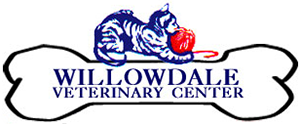Library
-
There are many environmentally friendly ways that owners can care for their pets. Waste disposal can involve biodegradable or compostable bags or careful composting. Cat litter can be transitioned to recycled newspaper or sawdust pellets. Any toys, beds, houses and other accessories can be biodegradable and/or recycled such as cotton or rubber. Cats should be kept indoors to reduce their impact on the ecology of their surrounding environment. A nutritionally adequate diet composed of organic food can be provided.
-
An abscess usually appears suddenly as a painful swelling that may be firm to the touch or compressible like a water balloon. If the abscess is located inside the body (e.g., in the liver), fever is expected, and if the abscess has ruptured internally, there may also be bacteria in the bloodstream. Treatment depends on the location of the abscess and the severity of the infection.
-
Acetaminophen (Tylenol, Paracetamol, APAP, N-acetyl-p-aminophenol) is a pain relief and fever-reducing medicine people use for many types of pain. Acetaminophen is available in many forms including tablets, capsules, gel caps, melt away tablets, rectal suppositories, and liquids. Acetaminophen is often found in homes with pets. Poisoning may happen when pets get into the owner’s medications.
-
Acetaminophen (Tylenol), a common human drug used to control pain and fever, is poisonous in cats. Since cats are not able to efficiently metabolize acetaminophen, they are more vulnerable to toxicity. Cats develop toxicity at much lower doses than dogs.
-
Acetaminophen (Tylenol), a common human drug used to control pain in fever, can be poisonous to dogs if inappropriate doses are given. Acetaminophen is occasionally recommended by veterinarians and should only be given under their direction. Young and small dogs have a higher risk for toxicity.
-
Canine acne is an inflammatory disorder of the lips and the skin of the muzzle. Dogs with mild cases of acne often have red bumps or pustules on their skin. This can, in more severe cases, lead to generalized swelling of the lips and muzzle, bleeding wounds, or scabs on the face. Commonly affected breeds include Boxers, English Bulldogs, Great Danes, German Shorthaired Pointers, and others. A variety of treatments are available and depend on the underlying cause of the acne.
-
Acupuncture is one aspect of Traditional Chinese Veterinary Medicine (TCVM) that focuses on restoring the energy balance in the body to promote healing. The technique requires the insertion of fine needles into the dog's body at specified points, called acupuncture points, where nerves and blood vessels converge. It is often used to treat dogs with arthritis and joint inflammation and may reduce the amount of medication a dog needs for these conditions. This handout explains how the treatment works and what to expect when your pet sees a veterinary acupuncturist.
-
Acute caudal myopathy results from overuse of the tail, causing a strain or sprain of the muscle groups used for tail wagging. Possible causes of limber tail include hard/vigorous play within the previous 24 hours, and prolonged swimming or hunting, often with exposure to cold water or weather. The tail may droop limply between your dog's rear legs, or it may stick straight out behind him for a short distance before drooping. This can be a painful condition for your dog. Uncomplicated acute caudal myopathy is treated with rest and anti-inflammatory medication, and typically resolves within a few days.
-
The Afghan Hound has glamorous good looks that belie his grit and stamina. This ancient breed runs swiftly, is relatively independent and gives affection only to those who have earned it.
-
In the words of Theodore Roosevelt, An Airedale can do anything any other dog can do — and then lick the other dog, if he has to.
